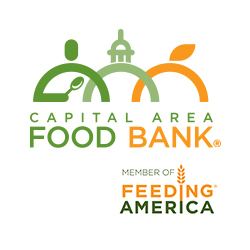Tax ID no. 52-11677581 Chair Peter Schnall Founder Lynn Brantley Expenses 59.91 million USD | President and CEO Nancy Roman CEO Nancy Roman (Jan 2013–) Founded 24 October 1979 Revenue 53.56 million USD | |
 | ||
Formation October 24, 1979 (1979-10-24) Similar Feeding America, DC Central Kitchen, North Texas Food Bank, Africare, Houston Food Bank Profiles | ||
Capital area food bank community marketplace dc
The Capital Area Food Bank is the largest organization in the Washington metro area working to solve hunger and its companion problems: chronic undernutrition, heart disease, diabetes, and obesity. By partnering with 444 community organizations in the District of Columbia, Maryland, and Virginia, as well as delivering food directly into hard to reach areas, each year the Capital Area Food Bank helps give 540,000 people access to good, healthy food.
Contents
- Capital area food bank community marketplace dc
- Capital area food bank together we can solve hunger
- History
- Political importance
- References
In fiscal year 2015, the food bank provided nearly 45 million pounds of food—the equivalent of 36 million meals—to the region. In addition to food, the food bank also provides nutrition education and cooking classes, empowering those it serves with the information and skills to shop for and cook healthy meals on a budget.
The Capital Area Food Bank operates with the assistance of 21,000 volunteers annually, who donate their time to help sort food, teach classes, and perform other important functions for the food bank. The food bank is a member of Feeding America.
Capital area food bank together we can solve hunger
History
The Capital Area Food Bank was officially incorporated on October 24, 1979, but it considers its founding date to be January 15, 1980 coinciding with Martin Luther King, Jr.'s fifty-first birthday. Prior to that time, the United States government's Food Stamp Program had been the city's primary source of assisting hungry residents. However, cutbacks in the Food Stamp Program planned for the early 1980s led to the food bank's inception by two local organizations, the United Planning Organization and the Interfaith Conference of Metropolitan Washington. In its first year of operation, the food bank managed to offer food to almost one hundred organizations and deliver 1,540 pounds (700 kilograms) of food each month. Throughout the rest of the 1980s, the Capital Area Food Bank proceeded to prosper as it partnered with nearby corporations, such as The Washington Post.
In 1991, the Capital Area Food Bank opened a new warehouse in the Brookland neighborhood in northeast Washington, D.C.. The new 48,000-square-foot (4,500 m2) warehouse is more than three times as large as the food bank's original 14,000-square-foot (1,300 m2) warehouse and continues to serve the Capital Area Food Bank today. In 1998, the food bank opening another warehouse, in Lorton, Virginia, which has since served the needs of residents of Northern Virginia.
In 1981, just over one million pounds (460,000 kilograms) were processed by the Capital Area Food Bank. Less than twenty-five years later, in 2005, the food bank outputs over 20 million pounds (9 million kilograms) of food to over 275,000 people, making it the largest food bank in the area.
In 2007, the Capital Area Food Bank distributed 20 million pounds of food and served approximately 383,000 people in the Washington metro area.
In 2014, the Capital Area Food Bank increased its reach to 540,300 people with 42 million pounds of food.
Political importance
Due to its central location near the seat of the United States government, the Capital Area Food Bank has been a popular stop for politicians. Four consecutive U.S. presidents — George H.W. Bush, Bill Clinton, George W. Bush, and Barack Obama — have visited the food bank.
In 1990, sitting president George H.W. Bush banned broccoli from Air Force One, stating, "I do not like broccoli. And I haven't liked it since I was a little kid and my mother made me eat it, and I'm President of the United States. And I’m not going to eat any more broccoli." In response to the ban, an estimated ten tons of broccoli were sent to the White House, which Barbara Bush in turn donated to the Capital Area Food Bank. That same year, the president visited the food bank and incorporated it into his Points of Light Foundation.
On Inauguration Day, 1993, more than thirty-five thousand cans, including one from Tipper Gore, were collected for the Capital Area Food Bank. In 1999, President Bill Clinton visited the food bank to volunteer and George W. Bush duplicated that act in 2002. Likewise, less than two weeks before Super Bowl XXXVIII in 2004, U.S. First Lady Laura Bush visited the Capital Area Food Bank to encourage Americans to participate in charitable activities. Other politicians have shown their support for the food bank by donating or otherwise promoting the cause of the Capital Area Food Bank. In 2005, for example, Maryland and Virginia Congressmen Chris Van Hollen, Steny Hoyer, Jim Moran, Frank Wolf, and Albert Wynn were successful in requesting US$1.3 million in federal funds for the food bank.
